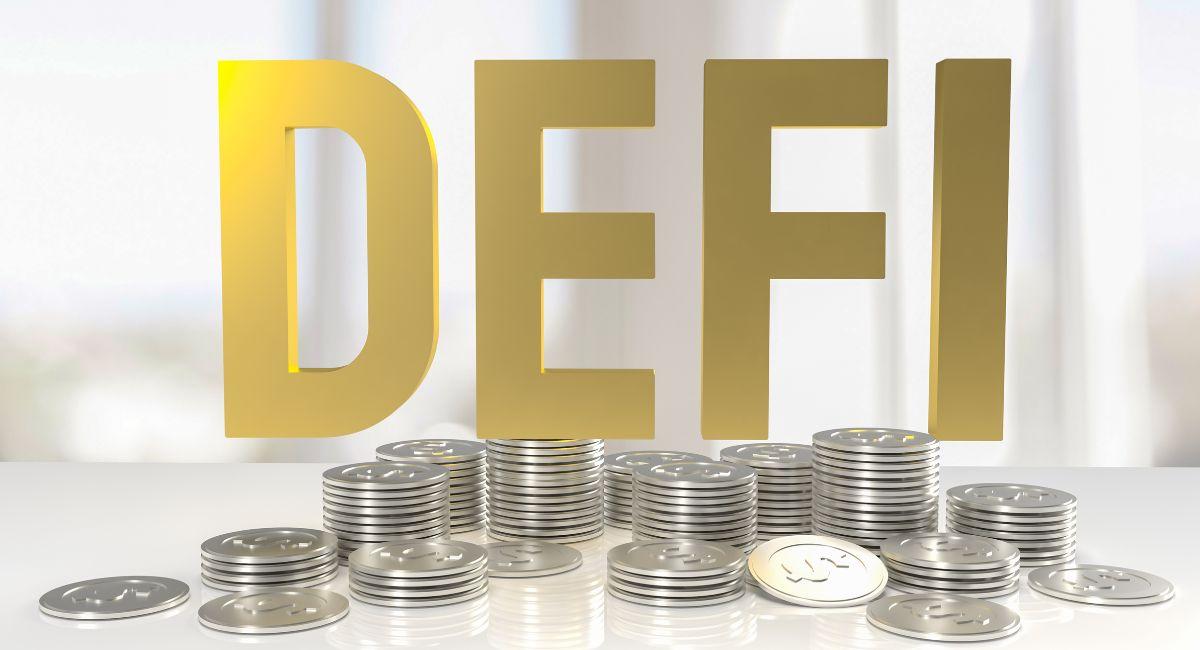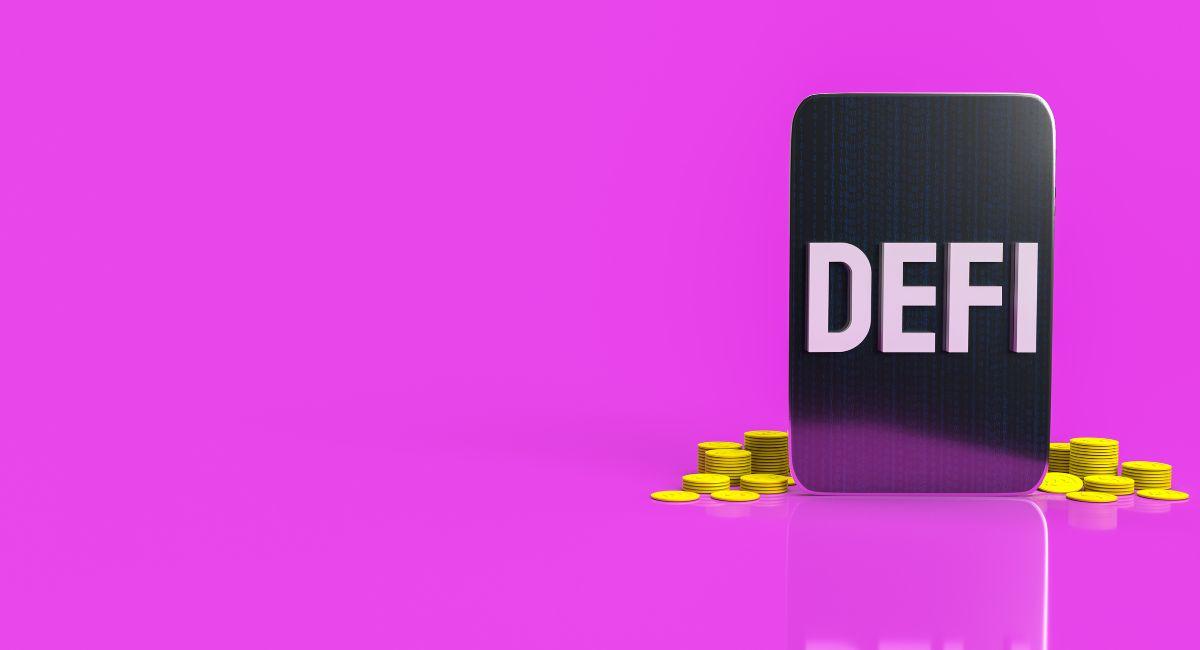The Top 10 DeFi Challenging Hurdles for Mass Adoption In Finance World

Decentralized Finance (DeFi) has emerged as a groundbreaking force in the financial landscape, offering a paradigm shift away from traditional banking systems. Despite its revolutionary potential, DeFi faces several hurdles on the road to mass adoption. Here are the top 10 challenges that the decentralized finance space must overcome:
1. Security Concerns:
DeFi platforms are susceptible to smart contract vulnerabilities, hacks, and exploits. Establishing robust security measures is crucial to building trust among users and preventing significant financial losses.
2. Regulatory Uncertainty:
The lack of clear regulatory frameworks poses a significant obstacle to DeFi’s widespread adoption. Addressing regulatory concerns is essential for building credibility and fostering collaboration between decentralized systems and traditional financial institutions.
3. Scalability Issues:
DeFi applications often face scalability challenges, leading to slow transaction speeds and high fees during periods of high demand. Implementing scalable solutions is vital for ensuring a seamless user experience.
4. User-Friendly Interfaces:
Many DeFi platforms lack intuitive and user-friendly interfaces, hindering accessibility for non-tech-savvy individuals. Improving user experience design can make DeFi more inclusive and appealing to a broader audience.
5. Interoperability:
The interoperability between different DeFi protocols and blockchains remains a significant hurdle. Achieving seamless integration and communication between diverse systems is crucial for fostering a cohesive DeFi ecosystem.
6. Market Volatility:
DeFi platforms are highly influenced by the volatility of the cryptocurrency market. Creating stable mechanisms and governance structures is essential to mitigate the impact of market fluctuations on decentralized financial systems.
7. Smart Contract Standardization:
The lack of standardized smart contract practices can lead to inconsistencies and inefficiencies within the DeFi space. Establishing common standards can enhance compatibility and reduce risks associated with smart contract execution.
8. Liquidity Challenges:
DeFi projects often struggle with liquidity, impacting the overall functionality and usability of decentralized applications. Developing effective liquidity solutions and incentivizing liquidity providers is crucial for sustaining DeFi ecosystems.
9. Education and Awareness:
A lack of awareness and understanding about DeFi among the general public hinders its adoption. Educating users about the benefits and risks of decentralized finance is essential for building a supportive and informed community.
10. Insurance and Risk Management:
DeFi platforms need robust insurance and risk management mechanisms to protect users from potential losses. Establishing insurance protocols and risk assessment frameworks can instill confidence in users and attract more participants to the decentralized finance space.
Also, read- Exploring DeFi Protocols And Ecosystems: Unveiling The Decentralized Finance Revolution
DeFi Innovations: Exploring cutting-edge developments and innovations in the decentralized finance space.

Decentralized Finance (DeFi) has witnessed a rapid evolution, marked by innovative developments that redefine traditional financial systems. Several key aspects contribute to the dynamic landscape of DeFi innovations:
- Automated Market Makers (AMMs): AMMs like Uniswap and SushiSwap have transformed the way users trade assets. These decentralized exchanges utilize smart contracts and liquidity pools, allowing users to swap tokens without relying on traditional order books.
- Flash Loans: Flash loans have emerged as a powerful financial tool within the DeFi ecosystem. These are uncollateralized loans that must be borrowed and repaid within a single transaction block, enabling users to exploit arbitrage opportunities and execute complex trading strategies.
- Decentralized Autonomous Organizations (DAOs): DAOs represent a new paradigm in governance. These are community-driven organizations that make decisions through consensus mechanisms, providing a decentralized way for participants to govern and manage protocol upgrades.
- Liquidity Mining and Yield Farming: To incentivize liquidity provision, platforms have introduced liquidity mining programs. Users are rewarded with tokens for providing liquidity to specific pools. Yield farming takes this a step further, allowing users to earn additional tokens by staking or farming in various protocols.
- Cross-Chain Integration: Interoperability is a key focus in the space. Projects like Polkadot, Cosmos, and others aim to facilitate seamless communication and asset transfers between different blockchain networks, expanding the scope and efficiency of decentralized finance.
- Decentralized Lending and Borrowing: Platforms such as Compound and Aave enable users to lend and borrow assets without the need for traditional intermediaries. Smart contracts manage the lending process, providing users with decentralized access to credit and earning interest on deposited assets.
- NFTs in DeFi: Non-Fungible Tokens (NFTs) have found their way into the ecosystem. Projects are exploring ways to collateralize NFTs, allowing users to leverage their digital assets for loans or other financial activities.
- Privacy and Security Solutions: With the growing importance of privacy in financial transactions, the projects are actively working on incorporating privacy-focused solutions. Zero-knowledge proofs and other cryptographic techniques aim to enhance the security and confidentiality of user data.
As the DeFi space continues to evolve, these innovations showcase the community’s commitment to creating a more accessible, efficient, and decentralized financial ecosystem.
Case Studies: Examining real-world case studies of successful DeFi projects

Certainly! Let’s delve into a couple of real-world case studies that highlight successful DeFi projects, shedding light on their strategies and how they navigated challenges:
- Compound Finance: Overview: Compound Finance is a decentralized lending protocol that allows users to lend and borrow various cryptocurrencies. It has gained significant traction in the space.Strategies:
- Governance Token (COMP): Compound introduced its governance token, COMP, which gave users the ability to vote on proposals and participate in the protocol’s decision-making process. This incentivized users to actively engage with the platform.
- Liquidity Mining: To bootstrap liquidity, Compound implemented a liquidity mining program. Users were rewarded with COMP tokens for supplying assets to the protocol, fostering a vibrant ecosystem of lenders and borrowers.
Challenges Overcome:
- Smart Contract Risks: Compound addressed smart contract vulnerabilities through rigorous testing and audits. Continuous improvements and upgrades were made to enhance security.
- Community Engagement: The introduction of the COMP token significantly increased community engagement, but effective communication and transparency were crucial to manage expectations and address concerns.
- Aave: Overview: Aave is a decentralized lending and borrowing platform that enables users to interact with a variety of assets.Strategies:
- Flash Loans: Aave pioneered the concept of flash loans, allowing users to borrow without collateral, provided the borrowed amount is returned within a single transaction block. This feature attracted traders and developers for arbitrage opportunities.
- Collateral Options: Aave continuously expanded its list of supported assets, offering a diverse range for users to borrow against or lend. This helped in attracting a broader user base.
Challenges Overcome:
- Security Measures: Aave implemented robust security measures, including audits and bug bounty programs. This proactive approach helped in identifying and addressing potential vulnerabilities.
- Regulatory Compliance: Aave proactively engaged with regulatory bodies to ensure compliance. Their efforts to adhere to evolving regulations contributed to building trust within the community and broader financial ecosystem.
These case studies highlight the importance of community engagement, innovative tokenomics, and proactive security measures in the success of DeFi projects. Additionally, flexibility in adapting to changing market conditions and regulatory environments is crucial for long-term sustainability.
🚨Exciting times in the world of DeFi! 🌐🔗 Epoch 1 is live on https://t.co/qejvUy5C0w, your ticket to unprecedented success in decentralized finance!
Horiza, the cutting-edge DeFi platform transforming governance and liquidity!
Join Epoch 1 and seize the opportunity!
🔝 Top 5… pic.twitter.com/DKCti5Y3PU
— Reflection🪩 (@0xReflection) January 17, 2024
Regulatory Landscape of decentralized finance and its implications for the industry.

The regulatory landscape for decentralized finance (DeFi) is a dynamic and evolving area that presents both challenges and opportunities for the industry. Here’s an exploration of the key aspects and implications of the regulatory environment surrounding:
- Global Regulatory Variations: Regulatory approaches to DeFi vary significantly around the world. Some countries have embraced innovation and are working to create clear frameworks, while others are taking a more cautious or restrictive approach. The lack of a standardized global approach poses challenges for DeFi projects that operate across borders.
- Concerns and Risks: Regulators express concerns about various aspects of DeFi, including potential money laundering, fraud, and the lack of consumer protection. The permissionless and pseudonymous nature of many DeFi platforms can make it challenging for authorities to monitor and regulate activities effectively.
- AML/KYC Compliance: Anti-Money Laundering (AML) and Know Your Customer (KYC) compliance are major focal points for regulators. Some DeFi projects have voluntarily implemented these measures to enhance security and address regulatory concerns. However, balancing privacy and regulatory requirements remains a delicate challenge.
- Decentralized Autonomous Organizations (DAOs): The regulatory status of Decentralized Autonomous Organizations (DAOs) is a gray area. Traditional legal frameworks struggle to categorize DAOs, which operate without a centralized governing body. Clarity on how DAOs fit into existing regulatory structures is essential for their widespread adoption.
- Tokenomics and Securities Laws: The issuance and distribution of tokens in DeFi projects raise questions about securities laws. Regulators scrutinize tokenomics, initial coin offerings (ICOs), and token sales to determine if they fall under existing securities regulations. Clear guidance is needed to distinguish utility tokens from securities.
- Smart Contracts and Code as Law: The reliance on smart contracts in DeFi introduces a unique challenge. While code is considered law in many platforms, the legal enforceability and accountability of smart contracts in case of disputes or vulnerabilities need clarification.
- Engagement with Regulators: Some DeFi projects proactively engage with regulators to navigate the regulatory landscape. Establishing a dialogue helps in building understanding and collaboration, potentially leading to more supportive regulatory frameworks.
- Interoperability and Cross-Chain Compliance: As expands across multiple blockchains, ensuring compliance and interoperability becomes crucial. Projects need to consider the regulatory implications on each blockchain they operate within and facilitate compliance with relevant jurisdictions.
In summary, the regulatory landscape for DeFi is in a state of flux, with ongoing efforts to strike a balance between fostering innovation and addressing potential risks. Clearer guidelines, industry collaboration, and proactive engagement with regulators can contribute to the long-term sustainability and mainstream adoption of decentralized finance.
In conclusion
Addressing these hurdles is pivotal for unlocking the full potential of DeFi and realizing its promise of democratizing finance. As the decentralized finance ecosystem continues to evolve, collaboration, innovation, and a commitment to overcoming these challenges will shape its future trajectory.
Related posts
Editor's Choice
- State PVP Partners with Spectral Labs to Transform Crypto Gaming with AI Agents, Powered by Syntax
- All About Exchange Coins and Tokens: Top 5 Intriguing Challenges About Their Use Cases
- AI Gamechanger Algotech (ALGT) Goes Viral as Arbitrum and THORChain Traders Ape In
- The Evolving Efficiency of Bitcoin Markets: Top 5 Intriguing Factors Driving Bitcoin Markets
- The Intriguing 2 Challenges of NFT Adoption: Innovation And PR
Hottest Blockchain News Daily
Get our latest posts and announcements in your inbox.
[cn-social-icon attr_class=”social-share-side”]


























































